Related Research Articles

Lenox Corporation is an American manufacturing company that sells tableware, giftware, and collectible products under the Lenox, Dansk, Reed & Barton, Gorham, and Oneida brands. For most of the 20th century, it was the most prestigious American maker of tableware, and the company produced other decorative pieces as well. Several Lenox china services were commissioned for the White House. By 2020, it was the last significant manufacturer of bone china in the United States, until the COVID-19 pandemic forced the closure of the company's only remaining American factory.
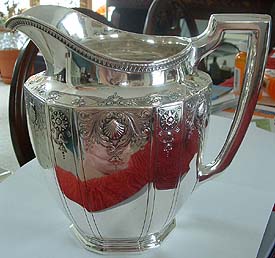
Sterling silver is an alloy composed by weight of 92.5% silver and 7.5% other metals, usually copper. The sterling silver standard has a minimum millesimal fineness of 925.
Oneida Limited is an American manufacturer and seller of tableware and cutlery. Oneida is one of the world's largest designers and sellers of stainless steel and silverplated cutlery and tableware for the consumer and foodservice industries. It is also the largest supplier of dinnerware to the foodservice industry in North America. The company operates in the United States, Canada, Latin America, Europe, and Asia, marketing and distributing tabletop products, which include flatware, dinnerware, crystal stemware, glassware and kitchen tools and gadgets. The factory in upstate NY was sold to Liberty Tabletop, who is the sole manufacturer of US made flatware. The company originated in the late-nineteenth century in the Oneida Community in Oneida, New York.
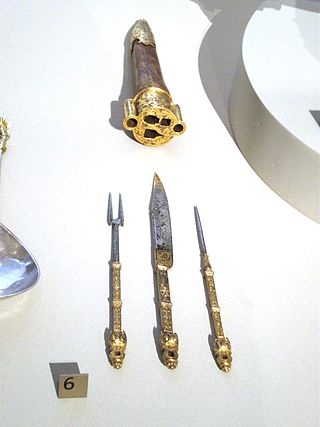
Cutlery includes any hand implement used in preparing, serving, and especially eating food in Western culture. A person who makes or sells cutlery is called a cutler. The city of Sheffield in England has been famous for the production of cutlery since the 17th century and a train – the Master Cutler – running from Sheffield to London was named after the industry. Bringing affordable cutlery to the masses, stainless steel was developed in Sheffield in the early 20th century.
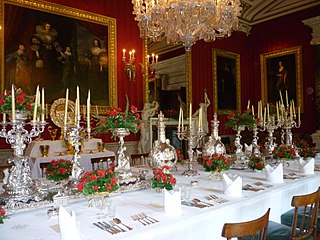
Tableware items are the dishware and utensils used for setting a table, serving food, and dining. The term includes cutlery, glassware, serving dishes, serving utensils, and other items used for practical as well as decorative purposes. The quality, nature, variety and number of objects varies according to culture, religion, number of diners, cuisine and occasion. For example, Middle Eastern, Indian or Polynesian food culture and cuisine sometimes limits tableware to serving dishes, using bread or leaves as individual plates, and not infrequently without use of cutlery. Special occasions are usually reflected in higher quality tableware.

Robert Radford Welch MBE, RDI, was an English designer and silversmith.

Reed & Barton was a prominent American silversmith manufacturer based in the city of Taunton, Massachusetts, operating between 1824 and 2015. Its products include sterling silver and silverplate flatware. The company produced many varieties of britannia and silver products since Henry G. Reed and Charles E. Barton took over the failing works of Isaac Babbitt in Taunton. During the American Civil War, Reed & Barton produced a considerable quantity of weapons for Union Army soldiers and officers.

The Gorham Manufacturing Company was one of the largest American manufacturers of sterling and silverplate and a foundry for bronze sculpture.
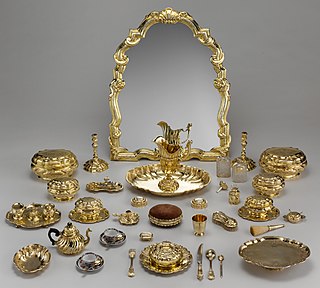
Household silver or silverware includes tableware, cutlery, and other household items made of sterling silver, silver gilt, Britannia silver, or Sheffield plate silver. Silver is sometimes bought in sets or combined to form sets, such as a set of silver candlesticks or a silver tea set.

Towle Silversmiths is an American silver manufacturer.
Lunt Silversmiths was an American manufacturer of fine sterling, silver-plate and stainless steel flatware, holloware, and giftware established in 1902.
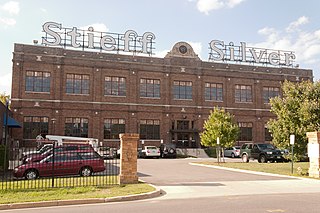
The Stieff Company, Silversmiths, Goldsmiths & Pewterers, located in Baltimore, Maryland, is also known as Kirk-Stieff after 1979.

John Axel Prip, also known as Jack Prip (1922–2009), was an American master metalsmith, industrial designer, and educator. He was known for setting standards of excellence in American metalsmithing. His works and designs have become famous for bringing together the formal, technical tradition of Danish design into harmony with the American desire for innovation. Several of his designs for the Reed and Barton Company are still in production today.

A silver object that is to be sold commercially is, in most countries, stamped with one or more silver hallmarks indicating the purity of the silver, the mark of the manufacturer or silversmith, and other (optional) markings to indicate date of manufacture and additional information about the piece. In some countries, the testing of silver objects and marking of purity is controlled by a national assayer's office.

Bing & Grøndahl was a Danish porcelain manufacturer founded in 1853 by the sculptor Frederik Vilhelm Grøndahl and merchant brothers Meyer Hermann Bing and Jacob Herman Bing. The trademark backstamp for Bing & Grøndahl (B&G) porcelains is the three towers derived from the Coat of Arms of Copenhagen. The company's Seagull dinnerware series became known as the "National Service of Denmark" in the 1950s when it was found in one tenth of all Danish households. In 1987 the company merged with its primary competitor, the Royal Porcelain Factory under the name Royal Copenhagen.

Jens Harald Quistgaard was a Danish sculptor and designer, known principally for his work for the American company Dansk Designs, where he was chief designer from 1954 and for the following three decades.
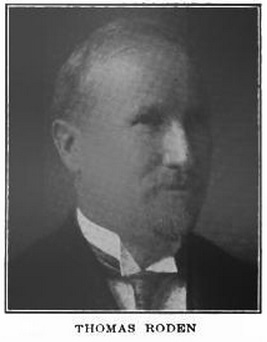
Roden Brothers was a Canadian tableware design and manufacturing company. It was founded on June 1, 1891 in Toronto by Thomas and Frank Roden. In the 1910s the firm became known as Roden Bros. Ltd. and were later taken over by Henry Birks and Sons in 1953. Roden Bros Ltd.'s silver was supplied by the province of British Columbia and with it they produced a wide range of silver holloware and flatware in traditional English styles. The company offered a variety of flatware patterns that included Stratford, Queens, and Louis XV. Goldsmiths Stock Company were their exclusive selling agents from 1900 to 1922.
R. Wallace & Sons was formed in Wallingford, Connecticut, and incorporated in 1879. As of 1893, this company manufactured silver and plated ware and cutlery and had about 600 employees.

The William B. Durgin Company was a noted American sterling silver manufacturer based in Concord, New Hampshire, and one of the largest flatware and hollowware manufacturers in the United States. Over the period 1905-1924 it was merged into the Gorham Manufacturing Company.

John Chandler Moore was a noted American silversmith, active in New York City. While initially working for Marquand and Co., he worked exclusively for Tiffany & Co. after 1851. His son, Edward Chandler Moore, was in charge of designing and manufacturing silverware at Tiffany.
References
- ↑ "Francis First Sterling Silver". Archived from the original on 2006-07-01. Retrieved 2006-10-24.
- 1 2 "Francis I by Reed and Barton Silver at Replacements, Ltd". Archived from the original on 2007-09-27. Retrieved 2006-11-06.
- ↑ Francis I by Reed and Barton at The Silver Queen, Inc